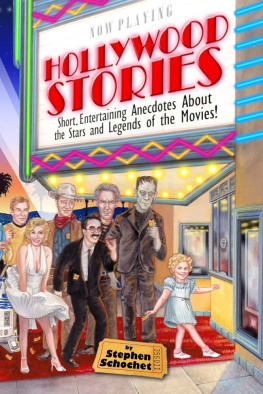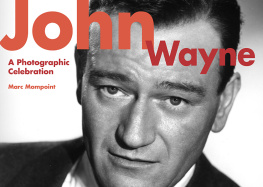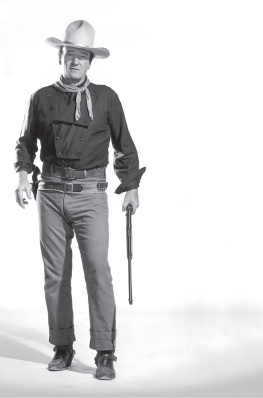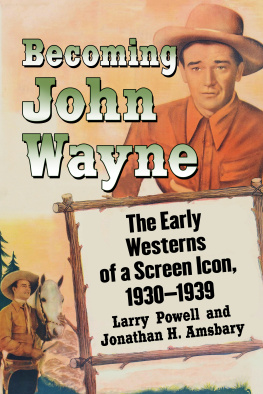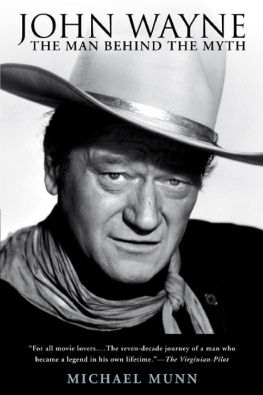All Rights Reserved. No part of this book may be reproduced or utilized in any form or by any means, electronic or mechanical, including photocopying, without permission in writing from the publisher.
Groups interested in special sales, promotions, or customized tours may contact us at the above address, or via email to .
Hollywood Stories: Short, Entertaining Anecdotes About the Stars and Legends of the Movies!
Cover illustration and layout by Adam McDaniel.

GREAT HOLLYWOOD
COMEDIANS
We never see ourselves as others see us.
Oliver Hardy
And awaaay we go!
Jackie Gleason
The Universal Maniac
In 1999, an Australian gentleman told me about an interesting experience he and his family had at Universal Studios. They were on the backlot tour passing one of the theme parks main attractions, the Bates Motel used in the 1960 horror classic Psycho, about a murderous young man named Norman Bates who loved his mother a little too much. As the guide gave out information about how director Alfred Hitchcock shot the picture, a tall man, dressed in drag and carrying a large knife, emerged from behind the old set and charged toward the tram. The narrator seemed to know nothing about the Norman Bates look-alike and clammed up completely. The make-believe killer wore such a convincing maniacal expression that some of the paying customers were frightened and screamed when he raised his weapon. Then the fiend pulled off his wig and he turned out to be comic Jim Carrey; the thirty-seven-year-old star was clowning around during a work break. After his laughing victims calmed down, Jim was happy to pose for pictures and sign autographs.
Extra: Jim Carreys second wife, actress Lauren Holley, once complained that her husband freaked her out because he couldnt pass a mirror in their mansion without stopping, staring into it, and making funny expressions for at least fifteen minutes. The same face-changing habit helped the Canadian-born comedian earn the praise of directors, adoration from his fans and millions of dollars.
Extra: Jim Carreys big break came in 1982 when fifty-two-year-old Mitzi Shore, the owner of the famed Comedy Store on the Sunset Strip, took a mother-like interest in his career. Three years earlier, Shores world was rocked when her unpaid performers went on strike. After all, if the waiters and the bartenders got wages, why not the talent? Why should Shore get rich while they made nothing? In Mitzis eyes, she gave comics a showcase to hone their acts and move on to bigger venues. She even provided some of them with free food and housing. How could they do this to her? It had been especially galling that thirty-two-year-old David Letterman, one of her favorites, had joined the work stoppers. When a car struck a disgruntled picketer who ended up in the hospital, Mitzi decided to settle up before someone got seriously hurt. (It turned out the victim, David Lettermans three-years-younger friend and future late-night TV rival Jay Leno, faked his injuries in a successful attempt to end the conflict.) The whole ugly incident left a bitter taste in Shores mouth; she banned several of the labor dispute instigators from the club.
When Carrey arrived on the scene, Mitzi thought the newcomer was someone special. He had an elastic body that seemed to be made of Silly Putty, was respectful and (unlike many of the other comics who the proprietor saw) looked good and always wore suits. Out of hundreds of comedians who auditioned at the Comedy Store each week, Shore gave Jim prime opportunities to perform nights at her club, publicly gushed over him and important people in Hollywood took notice.
Extra: A knife-wielding Norman Bates charging the tram later became a feature on some of the Universal Studios Tours.
The Lunch Prank
George Burns loved playing tricks on his best friend and fellow comedian Jack Benny. Once, they were getting lunch at the famed Brown Derby restaurant in Hollywood. George ordered Jacks favorite dish, bacon and eggs, and wondered why his friend settled for cereal. Benny explained his wife Mary had been giving him a hard time at home about his diet and would kill him if he had bacon and eggs. The exasperated Burns shook his head. How pathetic! What was the point of working hard to become rich, famous and powerful if you were going to be henpecked? And Mary wasnt even present. The inspired Benny nodded and changed his order. When they finished their hearty meals, George declared to the waiter that Jack would pick up the tab. The famous cheapskate turned red. Why the hell should I pay it?
Well, if you dont Ill tell Mary you ate bacon and eggs.
The Three Stooges Pain
In the early 1930s, when Moe Howard of The Three Stooges decided childlike violence would be their trademark, it caused decades of repercussions for both the comics and their followers. After appearing in some two hundred films, middle Stooge Larry Fine lost all feeling on one side of his face. Curly Howard, the junior member of the team, wore a disguise in public to avoid being kicked in the shins by fans. Shemp Howard, who left the act and came back after younger brother Curly suffered a stroke in 1946, almost got knocked out by a young actress that he criticized after several takes for being too ladylike with her punches. Moe led his partners through orchestrated mayhem aimed at adult movie audiences for twenty-five years. He never imagined that beginning in the late fifties, the Stooges shorts would constantly replay on TV in front of impressionable kids. A sentimental family man in real life, Moe traveled throughout the country to teach youngsters the techniques of harmless, two-fingers-to-the-forehead eye poking.
Extra: One evening in the late 1920s, Shemp Howard (1895-1955) accused Larry Fine (1902-1975) of cheating at cards and poked him in the eyes. As Larry rolled on the floor writhing in pain, and Shemp apologized, Moe Howard (1897-1975) held onto his sides laughing. The eventual leader of The Three Stooges thought the incident was the funniest thing hed ever seen, and incorporated similar violence into their act.
Extra: By the late 1930s, Jerome Curly Howard (1903-1952) had become the most popular Stooge. A skilled basketball player and ballroom dancer, Jerrys athleticism came in handy for his energetic antics on the big screen. Unlike Moe, who learned his scripts to the letter, the childlike Curly was a spontaneous performer. One time during filming, the youngest Howard brother suddenly got down on the floor and spun like a top for a few minutes until he remembered his lines.

